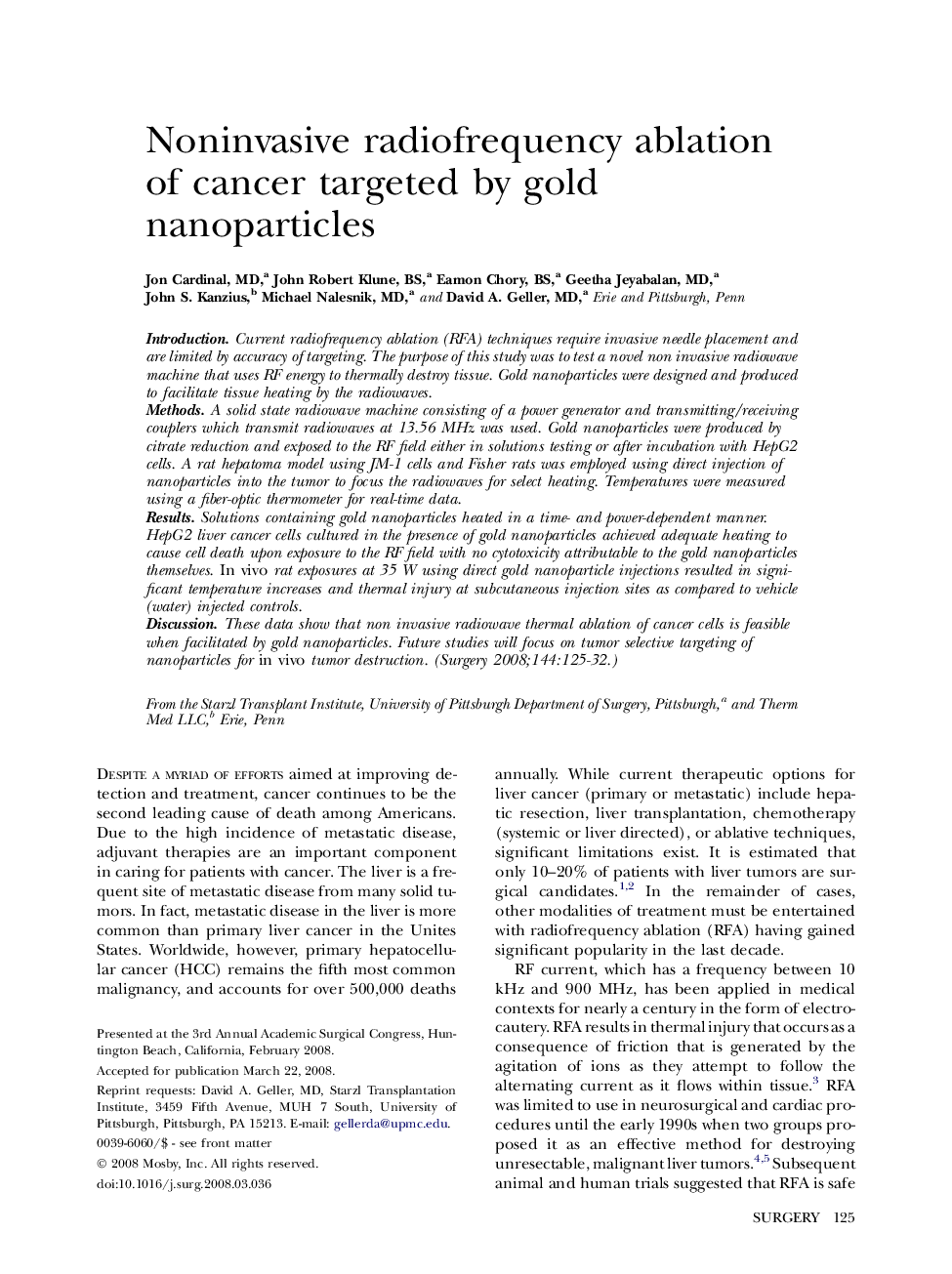| Article ID | Journal | Published Year | Pages | File Type |
|---|---|---|---|---|
| 4309445 | Surgery | 2008 | 8 Pages |
IntroductionCurrent radiofrequency ablation (RFA) techniques require invasive needle placement and are limited by accuracy of targeting. The purpose of this study was to test a novel non invasive radiowave machine that uses RF energy to thermally destroy tissue. Gold nanoparticles were designed and produced to facilitate tissue heating by the radiowaves.MethodsA solid state radiowave machine consisting of a power generator and transmitting/receiving couplers which transmit radiowaves at 13.56 MHz was used. Gold nanoparticles were produced by citrate reduction and exposed to the RF field either in solutions testing or after incubation with HepG2 cells. A rat hepatoma model using JM-1 cells and Fisher rats was employed using direct injection of nanoparticles into the tumor to focus the radiowaves for select heating. Temperatures were measured using a fiber-optic thermometer for real-time data.ResultsSolutions containing gold nanoparticles heated in a time- and power-dependent manner. HepG2 liver cancer cells cultured in the presence of gold nanoparticles achieved adequate heating to cause cell death upon exposure to the RF field with no cytotoxicity attributable to the gold nanoparticles themselves. In vivo rat exposures at 35 W using direct gold nanoparticle injections resulted in significant temperature increases and thermal injury at subcutaneous injection sites as compared to vehicle (water) injected controls.DiscussionThese data show that non invasive radiowave thermal ablation of cancer cells is feasible when facilitated by gold nanoparticles. Future studies will focus on tumor selective targeting of nanoparticles for in vivo tumor destruction.
